This is the moment archaeologists lifted a 3,000-year-old statue of an Egyptian Pharaoh considered ‘one of the most important discoveries ever’ from a muddy ditch.
Experts descended on the Souq al-Khamis district of the capital Cairo and used a crane to lift the three-tonne torso of the statue, which is believed to depict revered Pharaoh Ramses II.
The discovery, hailed by the Antiquities Ministry as one of the most important ever, was made near the ruins of Ramses II’s temple in the ancient city of Heliopolis.
Researchers from Egypt and Germany say the 26-foot statue probably depicts revered Pharaoh Ramses II, who ruled Egypt for more than 3,000 years ago.
The first part of the colossal – a large portion of the head – was pulled up Thursday.
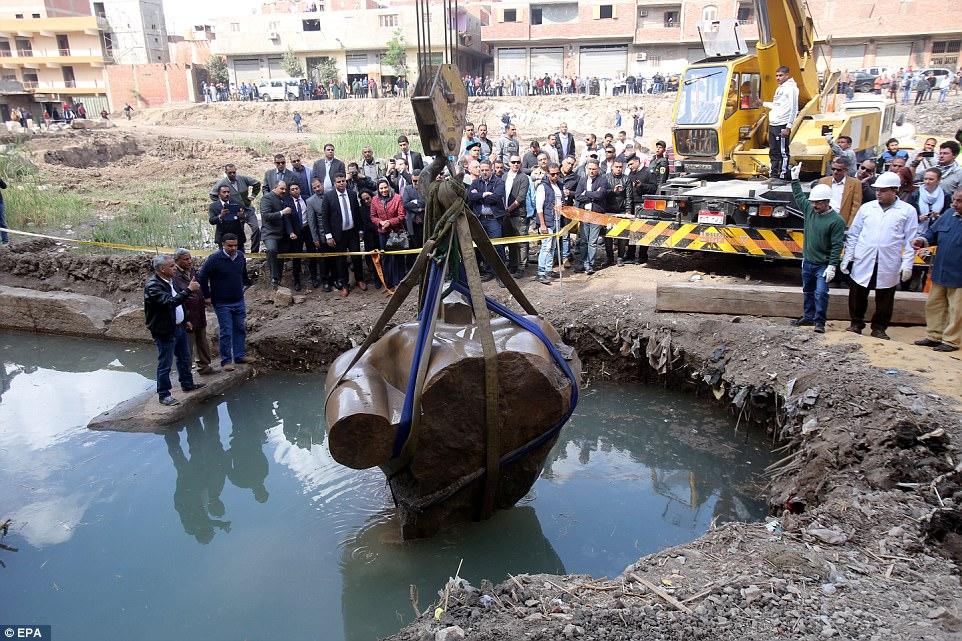
Pictures captured the moment archaeologists lifted a 3,000-year-old statue of an Egyptian Pharaoh, considered ‘one of the most important discoveries ever,’ from a muddy ditch.
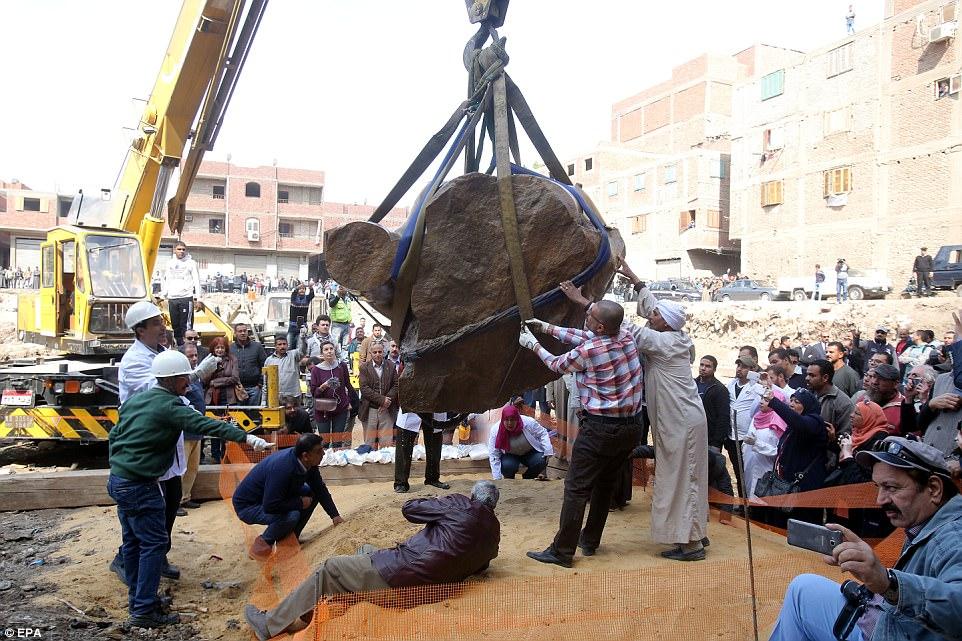
Experts descended on the Souq al-Khamis district of the capital Cairo and used a crane to lift the statue, which will now be taken away for examination and restoration.
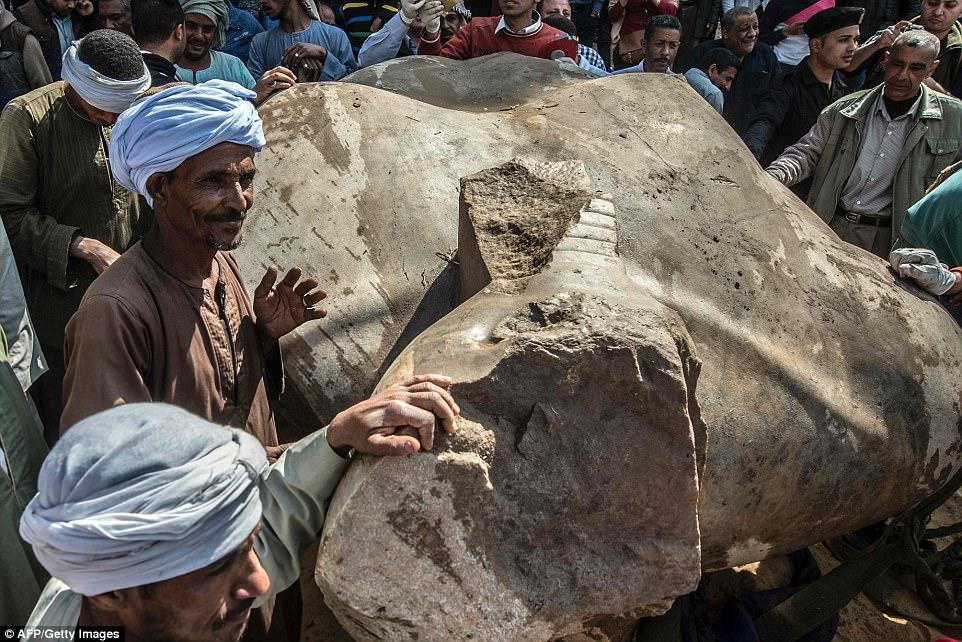
Discovery: Egyptian workers pose next to the excavated three-tonne torso of the statue after it was lifted from a ditch.
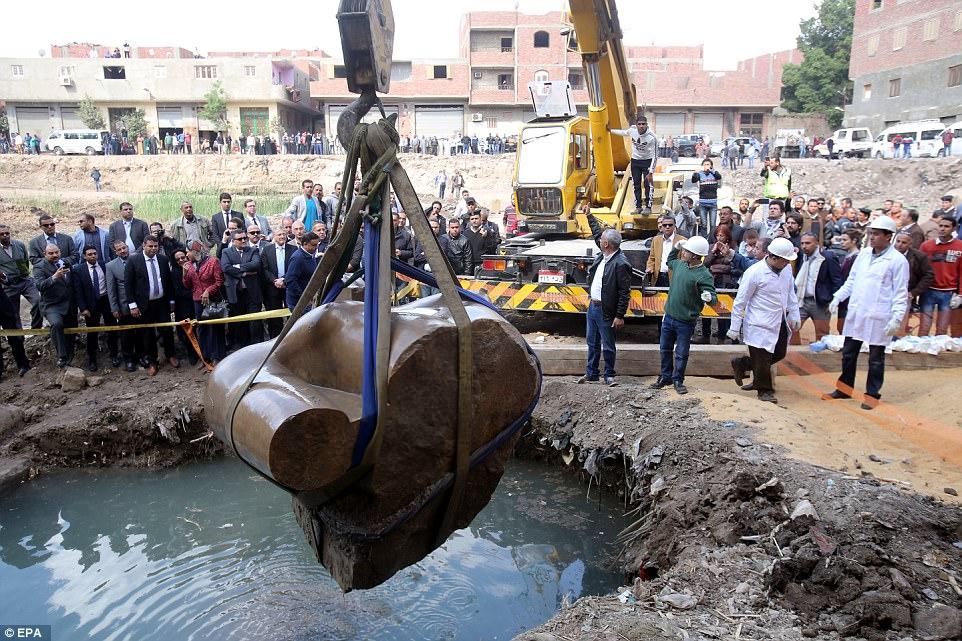
Egyptians eagerly look on as a crane lifts parts of a statue for restoration after it was unearthed at Souq al-Khamis district, at al-Matareya area, Cairo.
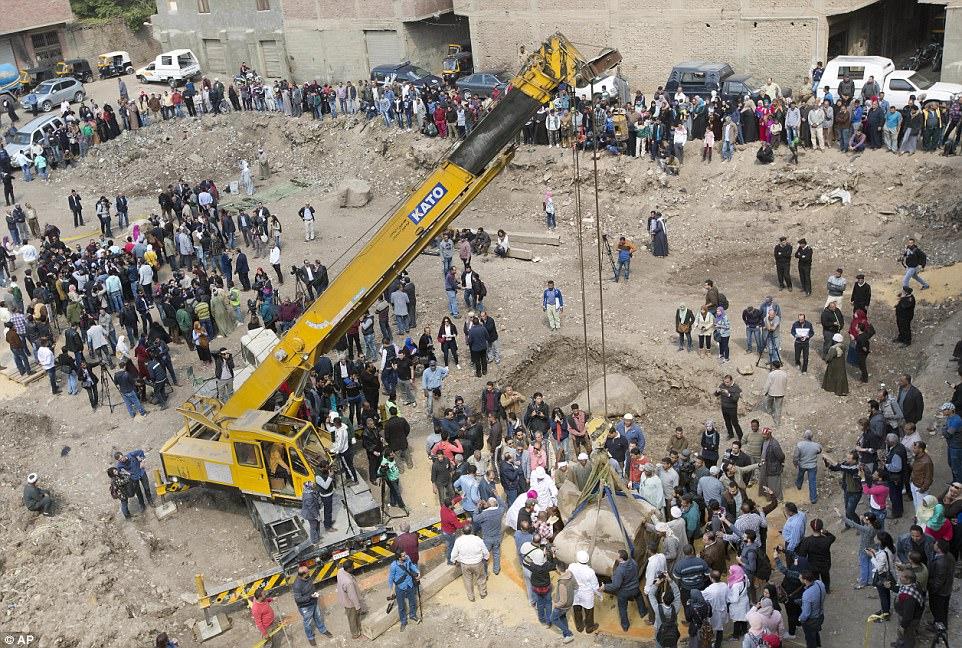
Antiquities workers and researchers watch as the statue’s torso is slowly lifted out of the hole before being taken away for examination and restoration.
The Ministry of Antiquities says the statue’s parts would be assembled at the Egyptian Museum in central Cairo, where they will be pieced together before being moved to the yet-to-open Grand Egyptian Museum near the Giza Pyramids.
A recent discovery of a colossal statue of a king, most probably Ramses II, made headlines around the world as archaeologists and locals alike gathered as a massive forklift lifted the statue’s head out of the water. The joint Egyptian-German expedition, including the University of Leipzig, also found the upper part of a life-sized limestone statue of Pharaoh Seti II, Ramses II’s grandson, which is 80 centimeters long.
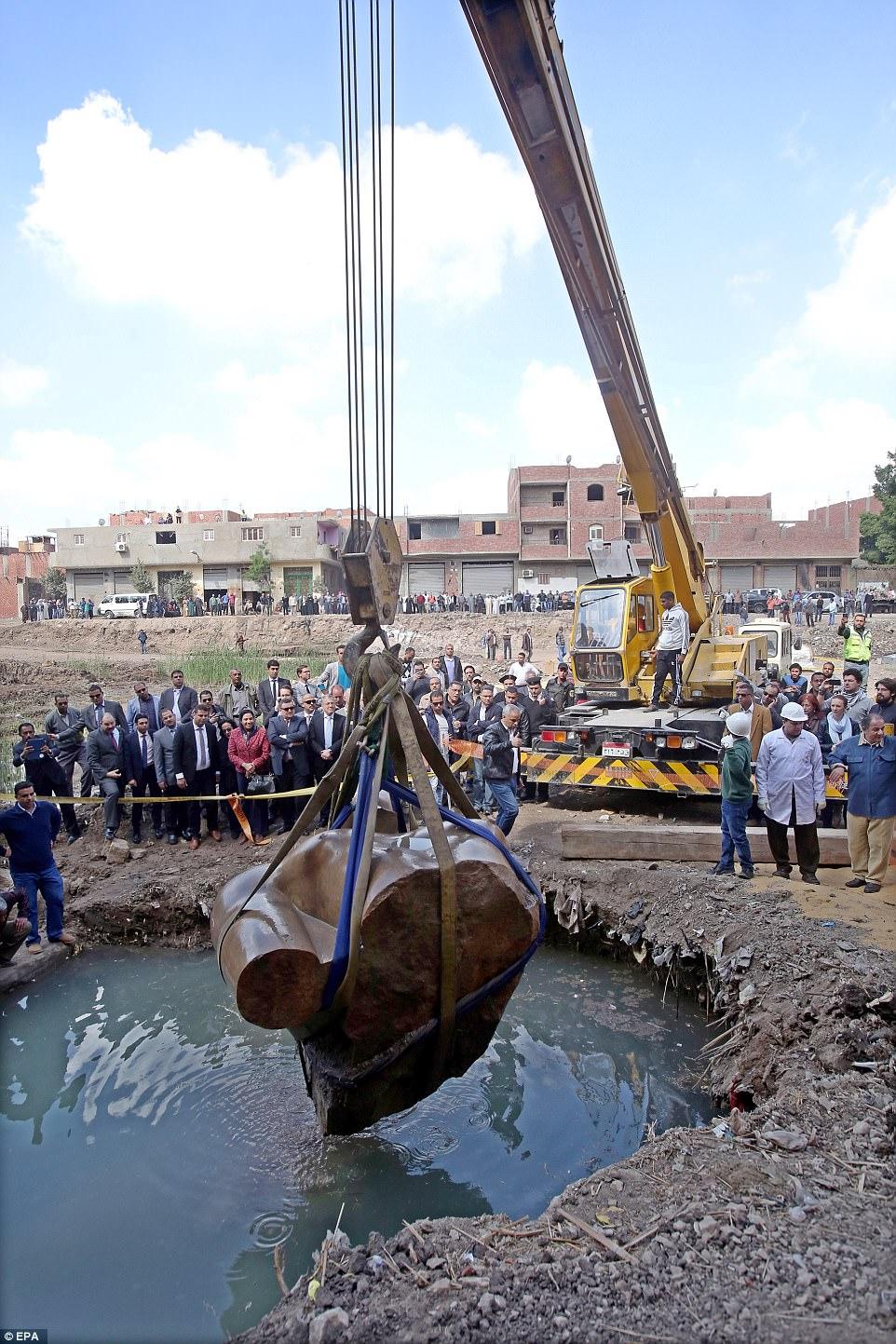
A German-Egyptian archaeological mission uncovered two 19th Dynasty royal statues in the vicinity of the Temple of King Ramses II in ancient Heliopolis.
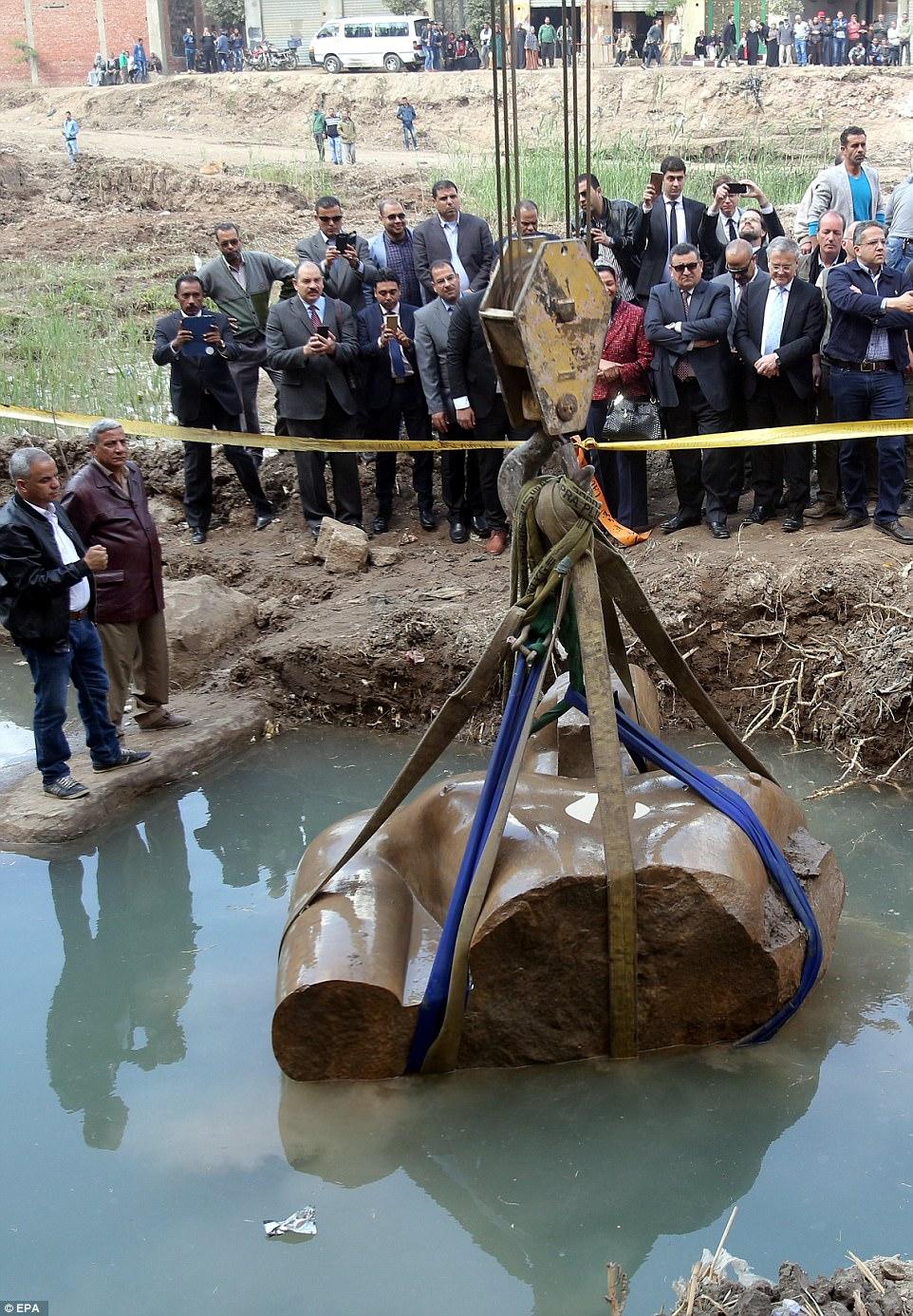
The statue was gently lifted to safety with the help of a crane as a crowd of dignitaries watched on in Cairo.
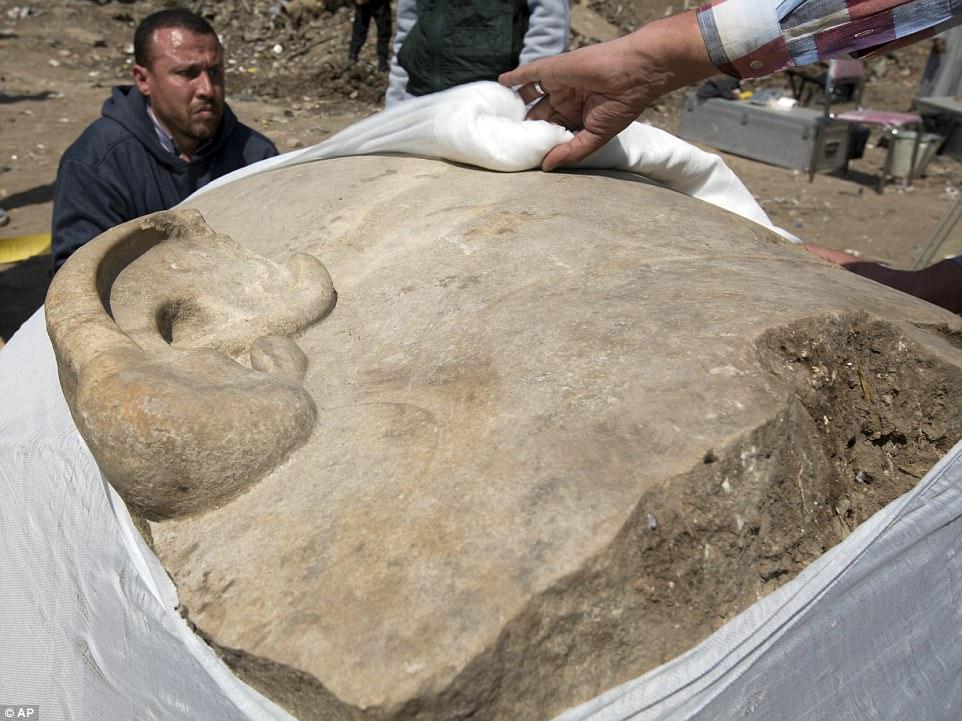
Antiquities workers covered the head of a massive statue, believed to be that of Pharaoh Ramses II, one of the country’s most famous ancient rulers.

The three-tonne torso was pulled by a crane as dozens of workers supported it while being carefully lowered to the ground on Monday.
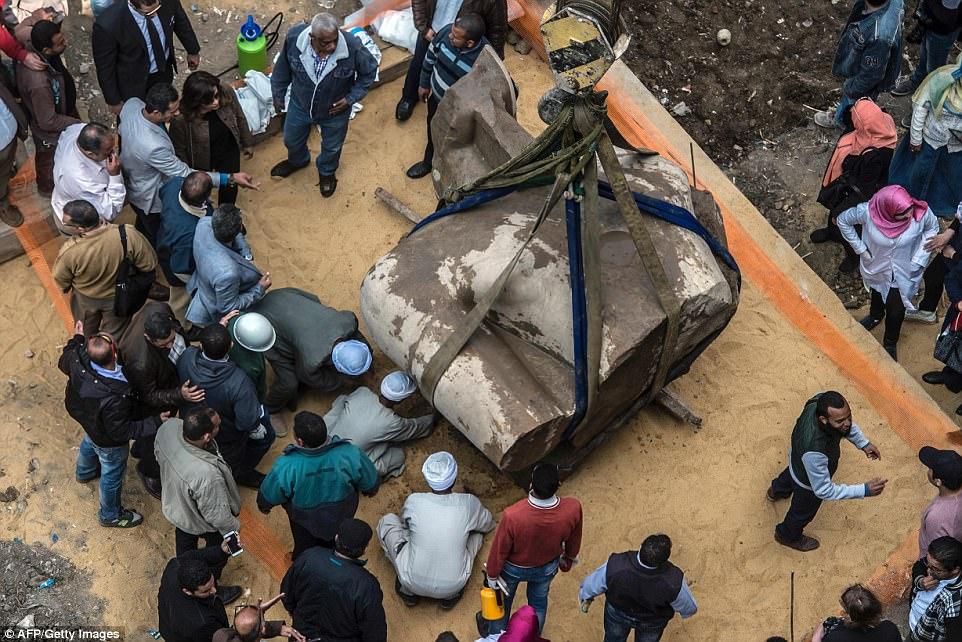
The Ministry of Antiquities says the statue’s parts will be assembled at the Egyptian Museum in central Cairo, where they will undergo restoration before being placed on exhibit.
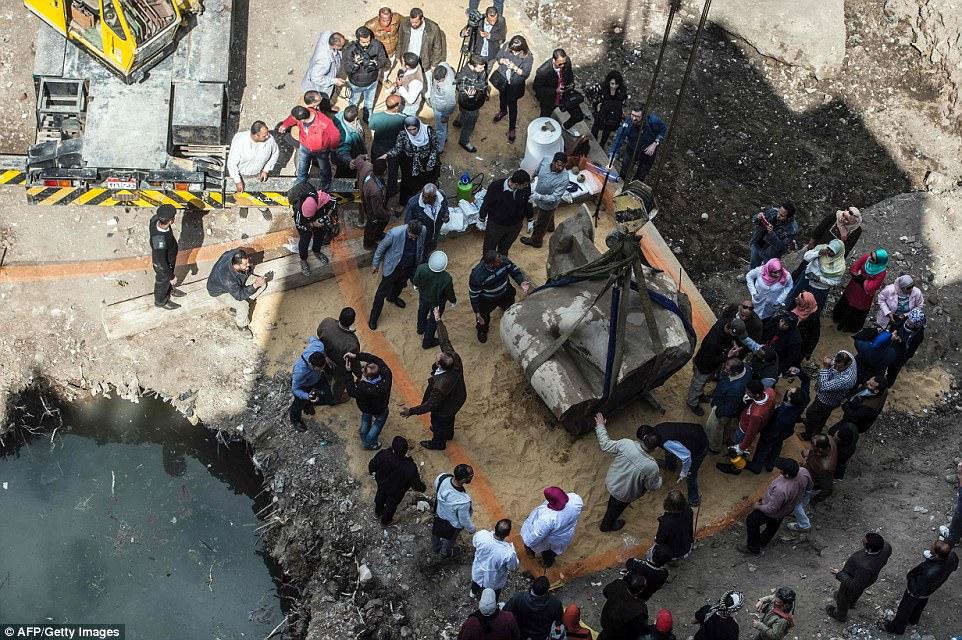
The statues of the kings and queens of the Nineteenth Dynasty (1295–1185 BC) were unearthed in the vicinity of the Temple of Ramses II in what was the old Phoenician city.
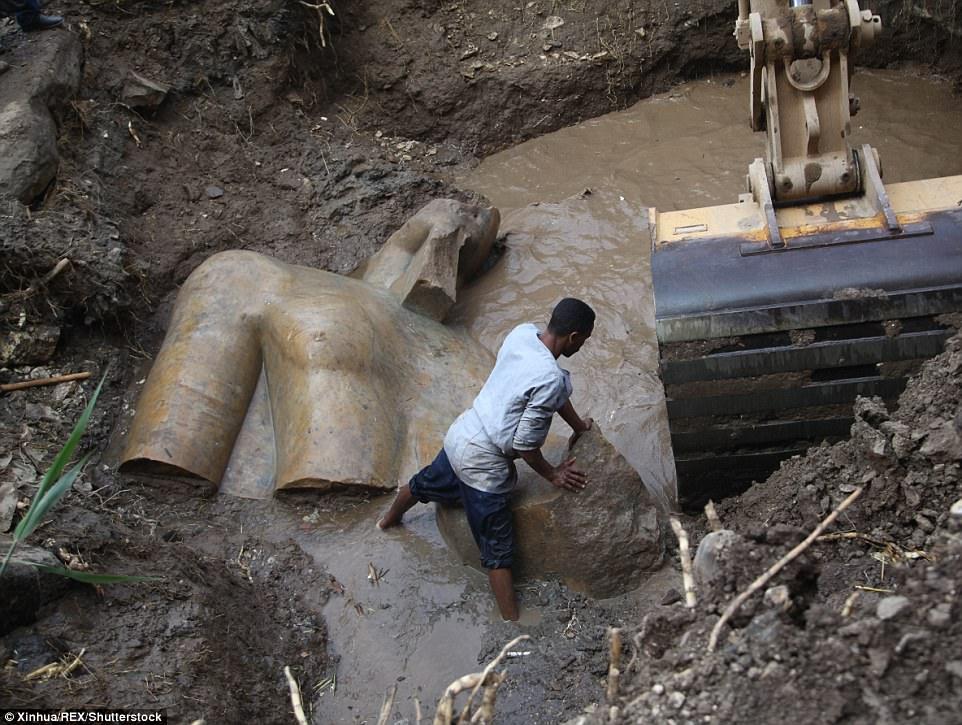
Archaeologists from Egypt and Germany have found a massive 26-foot (8 meters) statue submerged in the ground waters in a Cairo slum. Researchers say it probably depicts revered Pharaoh Ramses II, who ruled Egypt more than 3,000 years ago.
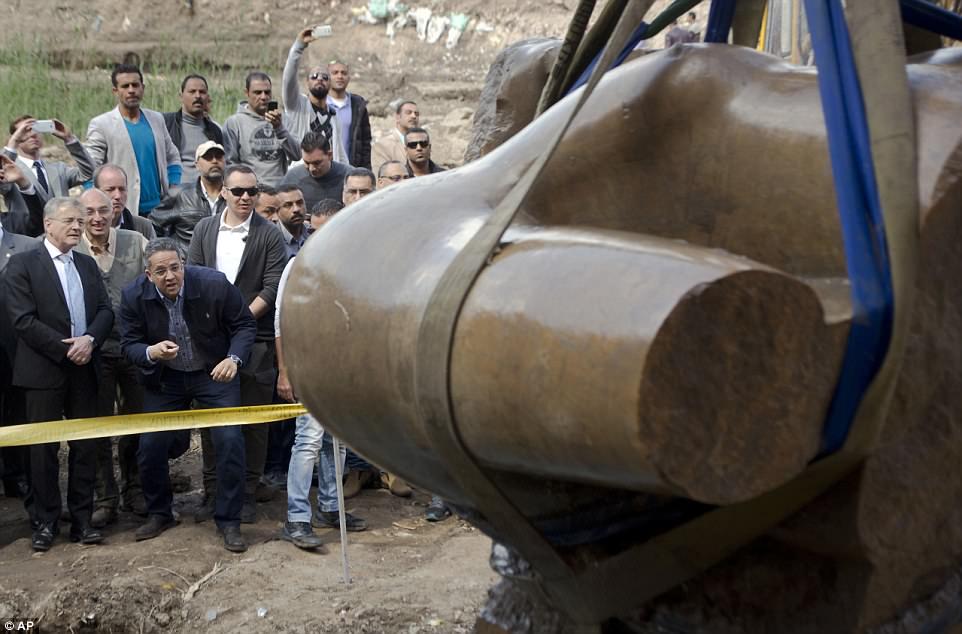
Egyptian Antiquities Minister Khaled el-Anani (second from left) and German Ambassador to Egypt Julius Georg Luy (left) watch as the statue is lifted from the ditch.
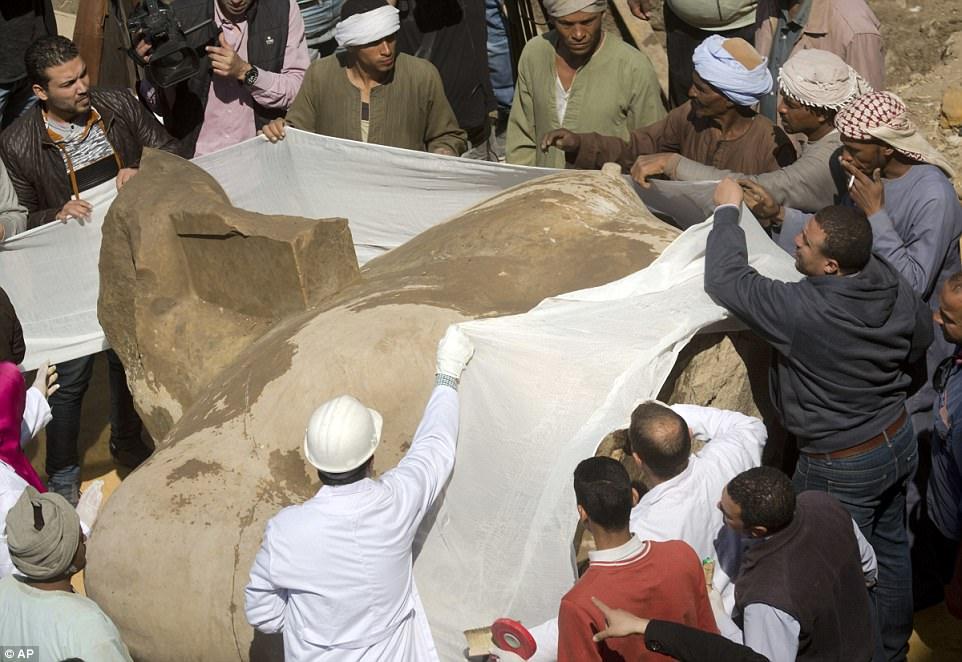
The statue is likely of Ramesses II, who took the throne in his early 20s and ruled Egypt for 60 years, more than 3,000 years ago. He is credited with expanding ancient Egypt’s reach as far as modern Syria to the east and Sudan to the south.




